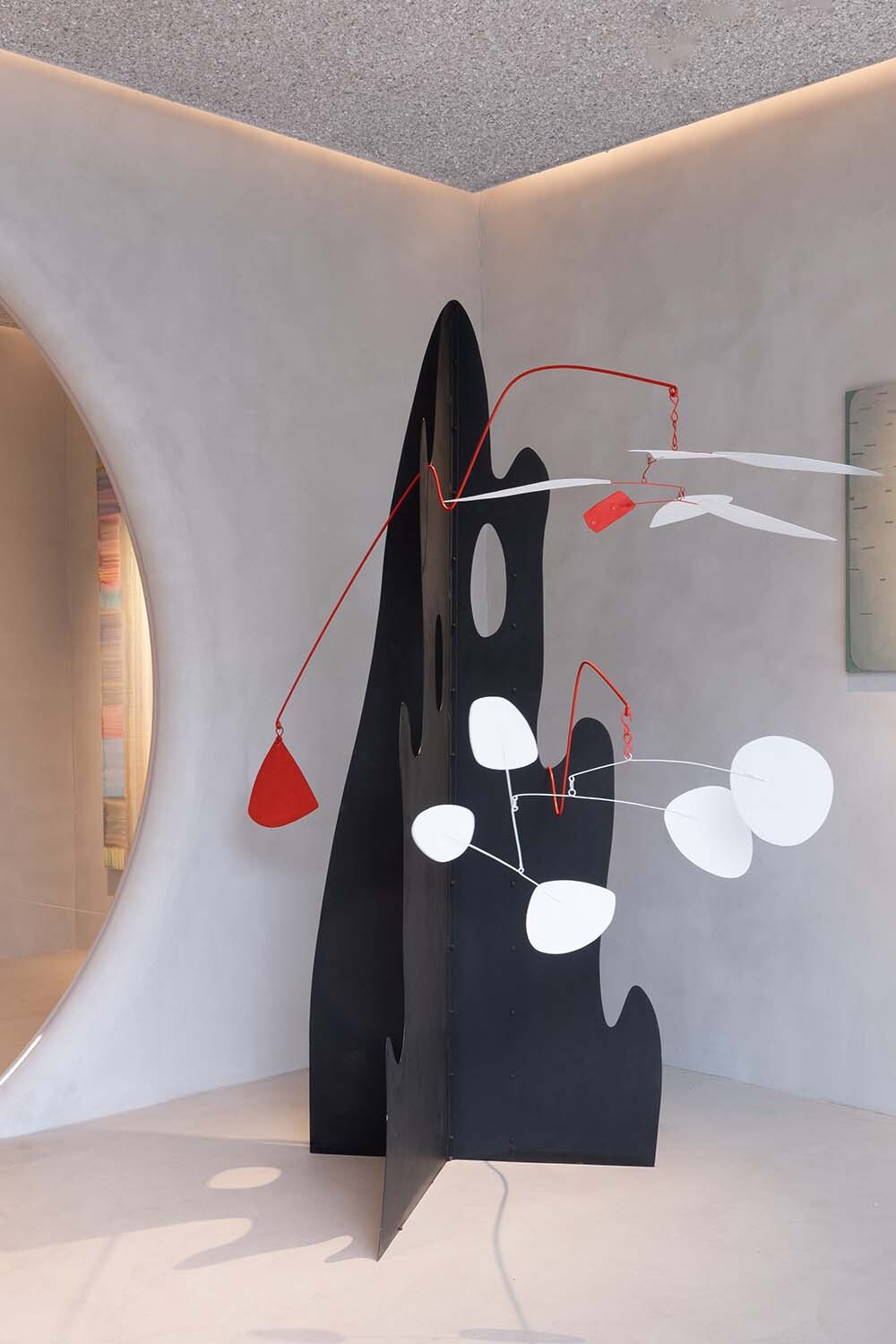Alexander Calder
CRAG WITH WHITE FLOWER AND WHITE DISCS, 1974
- Alexander Calder (°1898, USA)
- sheet metal, rod and paint
- 199 x 202 x 187cm
‘The basis of everything for me is the universe. The simplest forms in the universe are the sphere and the circle.’ Exemplifying Alexander Calder’s iconic and ethereal sculptures, Crag with white flower and white discs (1974) represents the culmination of Calder’s decades-long exploration of the mobile and stabile elements – an extraordinary synthesis of the painterly and sculptural idioms. Originally created as one of the 15 works for the exhibition Crags and Critters at Perls Gallery in New York in the same year, the present work embodies Calder’s poetic employment of floating colour and suspended shapes, an enchanting and fanciful manifestation of youthful exuberance illuminated in dancing forms, igniting the sensory experience.
Born in Pennsylvania in 1898, Calder originally trained as an engineer, before fully committing to his artistic practice in 1923. Hailed as the creator of the ‘mobile’, he was informed by his expertise in kinetics, mechanics, and other technical disciplines and his familiarity with industrious materials, and inspired by the pioneering Surrealist aesthetics of Paris in the 1930s, attaining one of the most prolific and successful artistic careers of the 20th Century. Today, his works are held many of the world’s most prestigious collections, including The Museum of Modern Art in New York, the National Gallery of Art in Washington, D.C., the Whitney Museum of American Art, New York, the Art Institute of Chicago, and the Tate Gallery in London.
